Turtle Bay, in the East 40s and 50s from Park Avenue east to the East River, likely takes its name from a Dutch term meaning “bent blade,” probably referencing the shape of the shoreline. It is somewhat hard to believe it now, but along the waterfront slaughterhouses had to be razed in the 1940s to make way for the United Nations complex on 1st Avenue. These days it’s a residential neighborhood prized for its peace and quiet — longstanding residents have included Katharine Hepburn and Irving Berlin.
Just before the Revolutionary War, the neighborhood figured in a bold act by a group of Liberty Boys (led by) Martin Willett, who sailed down from Greenwich, Connecticut in a small sloop, seized a cache of arms from a British storehouse in the lower city, then attacked a small stone fort that stood at the foot of East 45th Street, surprising the guards and making off to Boston with a boatload of supplies for the new Continental Army. –Gerard Wolfe, NY Walking Tours

After several years in temporary headquarters in Long Island that included stints in the New York Pavilion Building in Flushing Meadows-Corona Park and in Lake Success, the UN moved into permanent HQ on this site in 1952. The Secretariat Building, one of NYC’s first glass-walled towers, appeared first in 1950, followed by the General Assembly Building (1952) and Dag Hammarskjold Library (1963, seen here in the foreground).
This site on 1st Avenue was formerly home to a collection of slums, coal docks, factories and slaughterhouses. Originally the UN was going to be built north of the city in Westchester County, but an $8.5M grant from John D. Rockefeller to purchase a parcel of land from William Zeckendorf. The developer was planning to raze everything east of 3rd Avenue between 46th and 49th Streets, but the UN plan also was able to save some marvelous NYC architecture from the wreckers’ ball, some of which we will see in this entry.
Tudor City, the residential development set on a hill above 1st Avenue, was developed in the 1930s when the messy industries along 1st Avenue were still in place. As a result most of the windows in the complex face away from the current UN site.
The Presbyterian Church of the Covenant was founded in 1860 and its original building was constructed on Park (then 4th) Avenue and East 35th Street in 1865, a Romanesque design by the architect of St. Patrick’s Cathedral, James Renwick Jr. Soon after that, Covenant hired J. Cleveland Cady, architect of the old Metropolitan Opera House formerly at Broadway and East 39th, to design a country chapel in the then wilds of East 42nd Street between 1st and 2nd Avenues in 1871. Over time attendance at the chapel outstripped that of the Park Avenue church, and it was decided to consolidate the congregation at this building in 1891.
A Fellowship Hall was added in 1927 and in 1950, East 42nd was lowered several feet to allow truck traffic under Tudor City Place that bridged over it, necessitating a new granite and limestone base and staircase.
It’s been said that Tudor City, constructed surrounding Covenant in the 1920s, was built in a complimentary style to what was originally a country chapel.
Trygve Lie Plaza [SW corner of 1st Avenue and East 42nd] honors the memory of Norwegian statesman Trygve Lie (1896-1968), the first Secretary-General of the United Nations. The park was acquired by the City of New York in 1948 in connection with the widening of First Avenue and named for Lie in 1998. It is one of three parks in Turtle Bay named for former UN officials.
Lie headed the Norwegian delegation to the United Nations’ founding conference in San Francisco in 1945 and served as chairman of Commission III, which drafted the charter of the Security Council. On February 1, 1946, Lie was elected the first UN Secretary-General and was re-elected, over Soviet opposition, in 1950. Resistance from the Soviet bloc triggered his resignation in 1952. Lie was succeeded by Dag Hammarskjöld of Sweden, whose eponymous park is located six blocks to the north. NYC Parks
The “Peace Clock” on the wall of the Tudor Tower, by sculptor Lina Viste Grønli, was installed in 2015 and was designed so the international peace symbol design would appear on it twice daily.
Ralph Bunche Park, on the NW corner of 1st Avenue and East 42nd, and the sculpture Peace Form One, on 1st Avenue and East 43rd, both commemorate a titan of 20th century diplomacy: Ralph Johnson Bunche (1904–1971), the American educator, political scientist, and United Nations mediator.
For a lifetime of extraordinary achievement in the international arena, Bunche received the Nobel Peace Prize in 1950, the first African American to receive the award. In 1963, President John F. Kennedy awarded him the U.S. Medal of Freedom. As a U.N. mediator, secretary for special political affairs, and supervisor of peace-keeping missions in the Middle East and elsewhere, he played a key role in brokering U.N. sponsored peace agreements from 1949 to 1970. NYC Parks
Bunche was interred in Woodlawn Cemetery in the Bronx.
The Sharansky Steps, West 43rd and 1st, were occupied by a demonstration against Zimbabwean dictator Robert Mugabe the day I passed by.
Mayor Ed Koch named these steps leading from 1st Avenue to Tudor City in 1981 for Nathan Sharansky (1948 – ), a native Ukrainian who worked tirelessly to allow Jews living in the Soviet Union to emigrate elsewhere. Sharansky served as Minister and Deputy Prime Minister in four successive Israeli governments between 1996 and 2005. He was awarded the Congressional Gold Medal in 1986 and the Presidential Medal of Freedom in 2006. In 2016 he embarked on a speaking tour of US campuses with actor Michael Douglas.
The adjoining Isaiah Wall was built and dedicated in 1948 during construction of the U.N. headquarters and has a famous quotation from Isaiah 2:4: They will beat their swords into plowshares and their spears into pruning hooks. Nation will not take up sword against nation, nor will they learn war anymore. The rededication in 1975 added the name Isaiah to the quotation.

This handsome building on 1st Avenue by the Sharansky Steps is a holdover from the days when the other side of 1st Avenue was dominated by slaughterhouses and factories.

771 1st Avenue, the Herbert Hoover Building (named for the US President between 1929 and 1933) was the longtime home of the Boys and Girls Clubs of America and now the site of Brunei’s mission to the UN. Adjoining it is 777 1st Avenue, the 1962 Center for the United Nations. The interior features a stained glass installation called “Man’s Struggle For Peace and Brotherhood.”
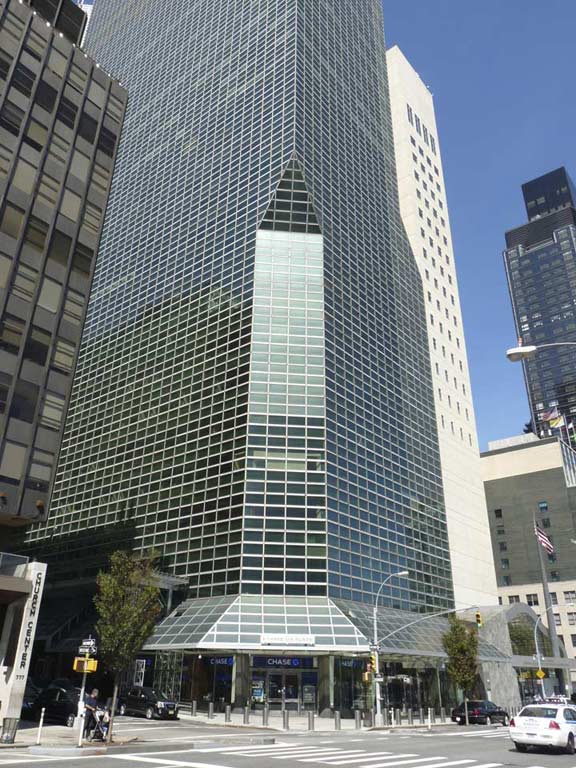
The gridiron skin of the 1976 glass-walled Millennium Hotel, NW corner of 1st and East 44th, has been compared to a sheet of graph paper.

The new building housing the United States Mission to the United Nations was dedicated on March 29, 2011. The lead architect was Charles Gwathmey of Gwathmey Siegel & Associates Architects who died in 2009, approximately two years before the structure was completed and you can see a Gwathmey trademark, an undulating surface, in this building and in the tall residential tower at 445 Lafayette Street at Astor Place, which was noted in NY Magazine as “Mis Van Der Rohe filtered through Donald Trump.”
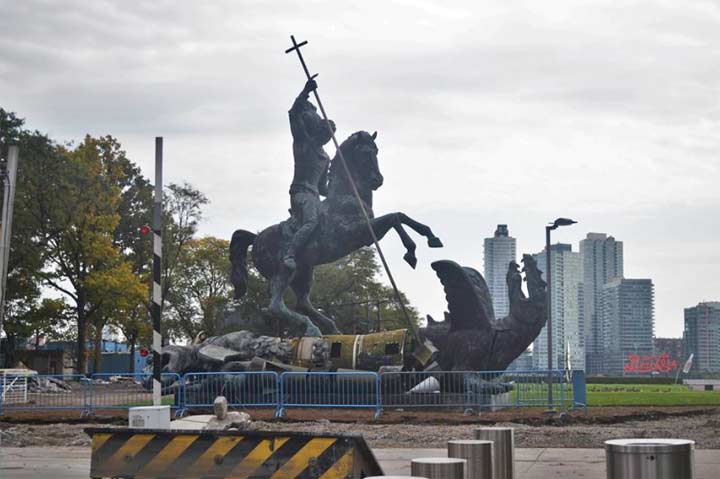
The public plaza of the UN is rather more difficult to get into than in previous years, so I contented myself with shooting through the fence. There are a pair of equestrian statues; a life-size bronze statue of an African elephant by Bulgarian artist Mihail Simeonov; Arnoldo Pomodoro’s reflective sculpture Sphere Within a Sphere; sculptor Karl Fredrik Reutersward’s 1988Non-Violence, showing a gun tied in a knot; and in recent years, a slice of the Berlin Wall has appeared on the campus.
Above is a depiction of St. George, the patron saint of England, and the dragon he defeated in the fables (the George Cross has been awarded in England for bravery since 1940). Sculptor Zurab Tsereteli incorporated fragments of US and Soviet Russian ballistic missiles; the Soviets donated the work in 1990, just before the fall of their empire.

The other, seen to the right of St. George, is a depiction of the spirit of Peace by sculptor A. Augustincic, a gift from Yugoslavia. (Note one hoof raised; ‘Peace’ is always wounded, but never dead. In equestrian statuary, there is a loose concept: if a warrior was killed in battle, both front hooves are raised; if he died later from wounds suffered on the battlefield, one hoof is raised; if he died peacefully in bed, all four are on the ground.)
Hope, a Monument to Raoul Wallenberg by Hungarian artists Gustav Kraitz and Ulla Kraitz and architects Abel, Bainson and Butz was dedicated on November 9, 1988 on a traffic island at 1st Avenue and East 47th Street along Raoul Wallenberg Walk. The monument, a gift of the family of Hilel Storch of Stockholm, features five black diabase columns, mined from Swedish bed-rock, each with two sides rough-hewn and two sides smooth and a blue ceramic sphere–the traditional collar of hope–atop column 1 over cubical paving blocks taken from the former Jewish Ghetto in Budapest. Off to the side, is a bronze replica of Raoul Wallenberg’s attaché case, left behind and filled with documents pertaining to his mission. Wally Gobletz
The Swedish diplomat (1912-1947) credited with saving tens of thousands of Hungarian Jews from extermination by the Nazis in the World War II years by designing counterfeit passports and distributing them to Jews bound for the concentration camps. He also purchased as many houses, villas, and buildings as possible and adorned them with the blue and yellow of Sweden’s flag, thereby making them neutral diplomatic property and a safe havens for Jews.
His whereabouts became unknown in 1945. In 1957, documents were released stating he had died of a heart attack in 1947 in a Russian prison. Suspicions remain that he was killed by the KGB.

Fountain on Dag Hammarskjold Plaza
Dag Hammarskjöld Plaza runs from 2nd Avenue east to 1st Avenue at East 47th Street, constructed by the NYC Parks department shortly after the UN opened on 1st Avenue in stages between 1947-1953. Mostly a concrete plaza with benches, it was named for the second UN Secretary-General, Sweden’s prime minister Hammarskjöld (1905-1961), and re-landscaped with decorative metal structures and new benches in 1997-1999. Unfortunately the direct view the park had of the famed Long Island City Pepsi-Cola sign is no longer possible after the sign was moved.
The 1964 Holy Family Church (315 East 47th facing the plaza) with its white marble exterior, reminds me a great deal of Edward Durell Stone’s 2 Columbus Circle, remodeled in a controversial re-boot in 2007. (The spoon-shaped decorations that gave it the nickname “Lollipop Building” were removed during the remake).
The church was new when it was visited by Pope Paul VI during his NYC tour in the fall of 1965. The pontiff visited the UN, the 1964-5 World’s Fair, and the ex-Cardinal said Mass before thousands at Yankee Stadium. It was the first time a sitting Pope had ever visited the USA.
The church is backdropped by the 72-story 2001 Trump World Tower (Costas Kondylis, architect). Has “the Donald” ever built an esthetically pleasing building? All of them seem to be about height and imposing power. For about one year, 2001-2002, it was the world’s tallest residential building until surpassed by Tower Palace Three Building G in Seoul, South Korea.

Holy Family Church has retained many of its 1964 features, including typography on signage, modernist lamppost design, and charming prayer garden.
Turtle Bay Gardens, the north side of East 48th and the south side of East 49th Street between 2nd and 3rd Avenues, is a comely anachronism in high-rise NYC.
Charlotte Martin, a descendent of early Dutch settlers in New York, loved the gardens she saw during her travels in London, Paris and Rome, and in 1919 decided to bring the idea to New York.
So she bought up 20 run-down houses near Second Avenue in a neighborhood too far east to be fashionable at the time; remodeled them from top to bottom; and created a lush shared garden at the rear of the houses, with old willow trees and a copy of a fountain at the Villa Medici in Rome.
She named the new neighborhood Turtle Bay Gardens, and sold most of the houses to friends. She moved into the largest of the houses, on East 49th Street, where she created a ballroom with a 22-foot-high decorative wood ceiling. Above, an arched loggia looks out over the secret garden.
The houses of Turtle Bay Gardens were designated a historic district in 1966; a report then called the homes “an oasis in the city,” with a central esplanade that “is reminiscent of an intimate Italian garden.”
Ms. Martin rebuilt the 10 contiguous midblock houses on East 48th and 49th Streets that dated back to the 1860s, many with swampy backyards. She removed the original stoops and refaced the facades in light-colored stucco with an occasional ornamented window.
At the rear, each house had a private garden space with a low wall opening onto a 12-foot-wide central garden. Iron turtles were designed into the gate posts at building entrances. –Wall Street Journal
Over the years a number of celebrities have resided here such as Stephen Sondheim, Garson Kanin and wife Ruth Gordon, Bob Dylan, E.B. White (who lived in three different buildings at various times on East 48th) and Katharine Hepburn, who lived on East 49th Street for 60 years.
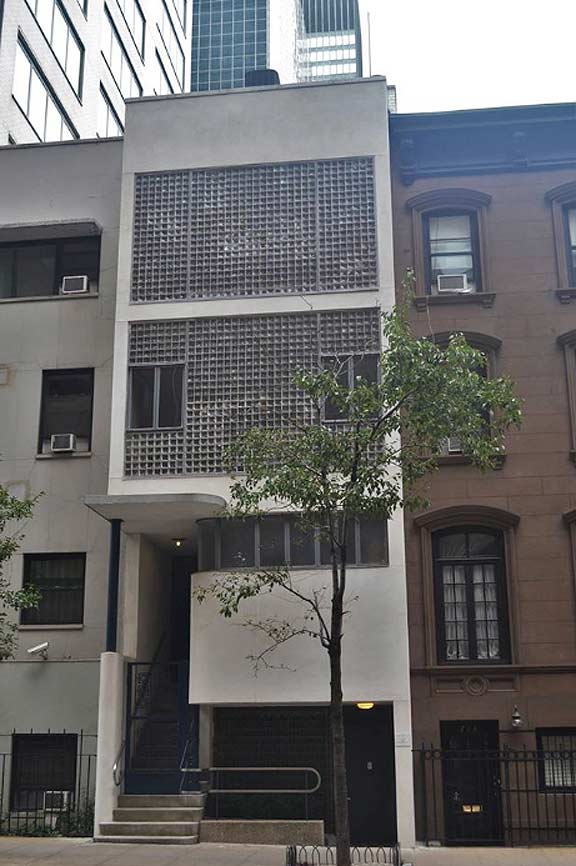
Turtle Bay Gardens has also seen its share of revolutionary architectural design. Swiss-born industrial architect William Lescaze redesigned an 1850s brownstone into something entirely new in the 1930s. It was the first concrete and glass Modernist residential building when it was finished in 1934.
Lascaze designed the 38-story black masonry and glass tower a couple of doors way on 3rd Avenue and East 48th, the US Plywood Building. It’s the longtime home of Grey Advertising founded in 1917 and now called Grey Global Group. When I worked at Photo-Lettering in the 1980s on East 45th, not far away, we got plenty of ad typography work from Grey.

Meanwhile, facing the courtyard at the back of 767 3rd Avenue at East 48th is the world’s largest chess board. It is the idea of Melvyn and Robert Kaufman of the William Kaufman Organization which has offices in 767. If you would like to play you notify the building concierge, who moves the pieces with a cherry picker. Pieces are moved once a week on Wednesday mornings.
The chessboard isn’t the only quirk at 767 3rd — inside the lobby you will find a stagecoach and a 1929 Ford truck. The Kaufmans also put a WWI fighter plane on the roof of a lower Manhattan high rise.

A couple of the businesses here such as the Smith & Wollensky steak house are hardly Forgotten, but it must be remembered that these are very old structures in what is increasingly becoming High-Rise Manhattan.
The restaurant occupies the former Manny Wolf’s steakhouse which was in bsuiness between 1897 and 1977. When S & W took over, they kept Wolf’s color scheme of green and white. The restaurant has appeared in a number of motion pictures including the recent American Psycho and The Devil Wears Prada.
It might look like a gated building front on East 49th Street between 2nd and 3rd Avenues, but this between-buildings passageway, now known as Amster Yard, goes all the way back to 1830 or earlier. On this site, the stagecoach to Boston began its route on a now-vanished road called the Eastern Post Road. Later in the century, tenements were built, and an alley between them was gradually covered with refuse until James Amster Associates, a design firm, took it over and remodeled it in the mid 1940s. Amster himself lived on the property until his death in the 1980s.
In 2002, Spanish Cultural Center Instituto Cervantes acquired the property and immediately discovered that it had become unfit for habitation. They razed the building and rebuilt it from scratch, but also rebuilt Amster Yard along in its old spot and added an art gallery and a charming back garden. The complex remains open to the public on weekdays, except when there is a private event.

A couple of doors away on 219 East 49th is Turtle Bay’s second Modernist building, this one built from scratch instead of remodeled. It was constructed by architect William B. Sanders and completed in 1935, and the same year it was awarded by The Architectural League of New York City with a silver medal for domestic architecture.
If you favor something more traditional, the north side of East 49th features some wonderfully detailed Tudor buildings.
Returning to 1st Avenue at Mitchell Place across from East 49th, here’s one of most profoundly Art Deco towers in the city, the Beekman Tower.
It was designed by John Mead Howells, an architect who worked closely with the famed Raymond Hood (the architect of the black and gold Radiator Building on West 40th Street facing Bryant Park), and is 28 stories of orange and tan brick and vertical striping.
As you approach the front of what is now the Beekman Tower Hotel, you can see the Greek alphabet carved on the exterior of the building on the Mitchell Place side. These letters are a clue to the building’s original name, the Panhellenic Tower, or, “All-Greek” Tower.
The tower was originally built to house a clubhouse for Greek-letter sororities and also to provide affordable housing for young women in the workforce — increasing in number in the 1920s. All of its Deco touches remain, down to the lanterns placed by the front entrance.
Mitchell Place is a tiny one-block, narrow passage running between 1st Avenue and East 49th Street east to Beekman Place. It is on a hill, so it ramps up east as it goes. Unusually it is open on one side (an off ramp of the FDR Drive) and as you can see, it probably has the most disproportionately tallest towers in Manhattan for such a short block.

Climbing Mitchell Place to where it ends at Beekman Place, a sliver of an East River view is available, here encompassing the new Four Freedoms Park on Roosevelt Island and the Queens West towers in Hunters Point with, of course, the neon Pepsi Cola sign.

There are two streets named Beekman in Manhattan, another in the Bronx and one more in Flatbush. Both Manhattan streets are in the same family, with Beekman Street, the older of the two in the South Street Seaport area named for Dutch immigrant William Beeckman, who arrived in 1647 on the same ship with the New Netherland colony’s director-general, “Peg Leg Pete” Stuyvesant. Beeckman, a Dutch West India clerk, first lived in the Corlear’s Hook area but later purchased property in what is now the Seaport and opened a leather goods shop.
Beeckman’s descendant James Beekman built a mansion that he named Mount Pleasant on a promontory overlooking the East River between East 49th and East 51st Street that was to figure prominently in American history. The British occupied the house during their domination of NYC from 1776 to 1783 and Nathan Hale (1755-1776), who was working as a spy for the patriots, was imprisoned and later hanged on the Beekman property.
The Beekman family returned to Mount Pleasant after the war and lived in the house until 1854, when a cholera epidemic induced them to leave town. The mansion survived until 1874, when it was torn down and Beekman Place, named for the longtime occupants, was laid out in a two-block stretch in its place. After an initial stretch where the area was home to lumber mills and coalyards (and slaugherhouses on its south end where the United Nations stands today) by the Roaring Twenties its fine river views gave rise to luxury apartment buildings for wealthy New Yorkers.
#17 Beekman Place, on the corner of East 50th, is home to the permanent UN mission of the Grand Duchy of Luxembourg, the third of the so-called Benelux European states: Belgium, the Netherlands, and Luxembourg. It is a small country of a little more than a half million population, bordered by Belgium, France and Germany, and is the last remaining world government ruled by a grand duke. Luxembourg is the world’s second largest investment fund center (after the United States), the most important private banking centre in the eurozone and Europe’s leading centre for reinsurance companies. French, German and the native Luxembourgish are spoken there. wikipedia
#17 was home to one of the grand old names in pop music, Irving Berlin, from 1947 until his death at age 101 in 1989. Berlin wrote countless classics of the American songbook, including the “unofficial” national anthem, “God Bless America,” as well as “White Christmas,” Alexander’s Ragtime Band,” “Always,” “There’s No Business Like Show Business” and hundreds of instantly recognizable songs.
On older maps, East 50th is subtitled, or alternatively named, Dunscomb or Dunscombe Place. In Old English, dun is hill, while comb is valley; the name means “hill contained within a valley.” The name could have been applied to describe a geological feature, or perhaps, there was a prominent local family called Dunscomb.
At the corner of East 51st and Beekman Place is a classic Type 24 Bishop Crook lamp. Now, all of Beekman Place is now lined with retro Bishop Crooks, apparently identical to this one. It takes a trained eye to spot a classic. For one thing, the retro versions have fashioned iron garlands entwined around the shafts, and this one doesn’t. But the real telltale is he presence of a fashioned fire alarm lamp bracket, like this one on a restored post on downtown Warren Street. These short brackets used to hold fire alarm indicators and were designed in the early 1900s for that purpose. New retro versions of cast iron bishop crooks and Corvington posts used modern curved pipes instead, so anytime you see a bracket like this, you’re looking at a pole that could be as much as 80 to 90 years old. There are retro versions of Crooks nearby, but this is a 1930s original.
A couple of weeks after I obtained these images the post got a makeover, with a new paint job and a new Bell luminaire with bright white LED lamps. A shield was placed in the reflector bowl on the building side so the bright light wouldn’t seep into the windows.
The pole stands in front of a handsome brick building, #39 Beekman Place, known as Hale House in honor of Nathan Hale. Beginning in 1941, it was home to surrealist painter Max Ernst (1891-1976) for a few years.

Near the site of the former Beekman Mansion stands the former PS 135, a Romanesque revival building that went up in 1892. It was hollowed out except for the exterior in 2000 and converted to luxury residences.
I last drank at Parnell’s Pub at 1st Avenue and East 53rd in 1983, and yet it has survived for over 2 more decades. The tavern’s namesake Charles Stewart Parnell (1846-1891) was an indefatigable proponent of Irish Home Rule as a member of British Parliament in the 1880s.
A pair of French Second Empire clapboard houses built by Robert and James Cunningham in 1866 have somehow survived at 312 and 314 East 53rd just east of Second Avenue on a block otherwise dominated by brownstone buildings, which came along about 20 years later. In 1866 they were nestled at the city’s northern extent and likely were surrounded by fields and forests. – Meyer Berger’s NY

Finishing with a pint and a burger at P.J. Clarke’s at 3rd and East 55th, established by Ehret’s Brewery in 1890, with Patrick Joseph Clarke taking over in 1904, continuing until his death after World War II. The place still holds on to old-time trappings such as vintage porcelain urinals, mahogany woodwork, tin ceiling, and portraits of FDR, JFK and Abraham Lincoln. Customers jot down their orders on notepads provided by staff– a Clarke’s tradition. Frank Sinatra, Jackie Onassis, and Nat King Cole were all regular patrons, and Buddy Holly proposed to his wife, Maria Elena, at Clarke’s on their first date in 1958. Dick Clark always made his way here after finishing his New Year’s Rockin’ Eve ABC broadcasts. And, Ray Milland staggered up 3rd Avenue in an alcoholic daze after cadging drinks at Clarke’s, which was called Nat’s Bar in The Lost Weekend.
There are 7 other branches of P.J. Clarke’s in Manhattan, Chicago, Washington, Las Vegas, and São Paulo, Brazil, but this is the original.
Some photos by Bob Mulero
10/30/16








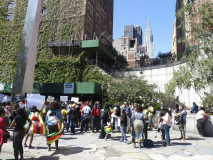




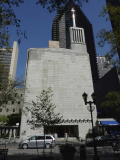






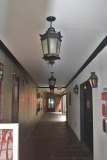






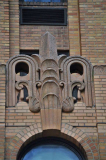













2 comments
The last time I was in New York, I stayed at the YMCA in Turtle Bay. I was there during the NGO’s met for the women’s symposium at the United Nations in March of 2017. I would like to stay in Turtle Bay next year and I am searching for a bed and breakfast. I would also like to save money, so inexpensive living is my goal. Do you have any names of such places?
Back in the 1950s and into the early 60s I had some friends who lived along 2d Ave at the foot of Tudor City. It was a small neighborhood unto itself. We also had some friends acquaintances who lived in Tudor City. On the corner of “d and 43rd St was a small soda shop/hangout called the Saucer. A guy named Archie was the owner and ca. every hour he would demand that we buy something; ten cent minimum. There was also a grocery store and a news agency. Does anyone have fotos of this area? 1950-1961?